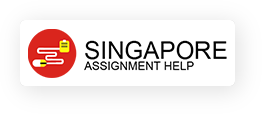| University | Singapore University of Social Science (SUSS) |
| Subject | Family System Therapy |
Family Systems Therapy Assignment 1 (50% weightage)
- Give three (3) examples of behaviour that might characterize an enmeshed family and three (3) examples of behaviour that might characterize a disengaged family. (20 marks)
- What communication patterns/messages have been passed from your family-of-origin (FOO), representing key intergenerational transmissions? To what extent have you been influenced by these patterns/messages? (20 marks)
- Identify one or more narratives/themes that serve to create family meanings (values, identity) of a family you know. (20 marks)
- Circular causality is defined as; forces moving in many directions simultaneously. Within a family, any action by one member affects all other members and the family as a whole. Provide two (2) examples in your own family characterized by circularity. Discuss how the communication occurs. (20 marks)
- Take a position and discuss whether conflict is inevitable and necessary for the development of family relationships. Justify your stand with examples. (20 marks)
Hire a Professional Essay & Assignment Writer for completing your Academic Assessments
Native Singapore Writers Team
- 100% Plagiarism-Free Essay
- Highest Satisfaction Rate
- Free Revision
- On-Time Delivery
MARKING SCHEME
FST
| Criteria | Total Marks |
|---|---|
| 1a. Three examples of enmeshed family behaviour | 10 |
| 1b. Three examples of disengaged family behaviour | 10 |
| 2a. What communication patterns/messages have been passed from your family-of-origin (FOO), representing key intergenerational transmissions? | |
| 2b. To what extent have you been influenced by these patterns/messages? | 10 |
| 3. Identify one or more narratives/themes that serve to create family meanings (values, identity) of a family you know. | 20 |
| 4. Circular causality is defined as forces moving in many directions simultaneously. Within a family, any action by one member affects all other members and the family as a whole.
Provide two (2) examples in your own family characterized by circularity. Discuss how the communication occurs. |
|
| 5. Take a position and discuss whether conflict is inevitable and necessary for the development of family relationships. Justify your stand with examples. | 20 |
| Total | 100 |
Family Systems Therapy Assignment 2 (50% weightage)
Read the instructions carefully:
Follow the guidelines below. Note that this paper is confidential and will not be revealed to anyone apart from the instructor.
Marks distribution: (25% for part 1 and 75% for part 2)
Part 1: Genogram and brief overview of family of origin (25%).
- Depict your family of origin with the use of a genogram and a few paragraphs. (10 marks)
- Give a brief overview of the family structure, some family history and your perception of how well members relate to one another on an emotional and cognitive level e.g. was it easy to talk about uncomfortable issues within the family? (5 marks)
- How do members usually manage conflicts? (5 marks)
- Do they tend to solve problems as a collective unit or do they function more independently? (5marks)
Buy Custom Answer of This Assessment & Raise Your Grades
(Word count: 500 ±10% excluding genogram
Part 2: Family of Origin reflection (75%)
Based on your completed family genogram and brief overview, discuss your family of origin. Describe and analyze, using specific examples of events, situations and issues based on the following themes:
1) Issues of culture, ethnicity, religion, occupation, and education. (10 marks)
2) Transactions, past and present, between family members. For example, has the pattern of communication remained similar or has it evolved over time? If it has evolved, explain why and how so? Was it easy to talk about uncomfortable issues within the family, why? (20 marks)
3) Family values, family rules and problems, and responses to problems. Explain, in your perception, the origins of the above, how it was maintained and the function it served. How were conflicts usually resolved and whether the family tends to come together as a collective unit in trying times or do they tend to solve problems independently. (20 marks)
4) The smaller subsystems within the family and the integrity of the boundaries and how it has been respected/ disrespected and handled appropriately or inappropriately. (20 marks)
5) Referencing and formatting in APA style. (5 marks)
Note that the above themes do not have to be followed rigidly in the above sequence. They are just guidelines, as long as there is a logical flow in your writing. You may also want to add depth to your writing by linking some of your observations, analysis and conclusion drawn to the various systemic/ family theories you have learnt from this module.
(Word Count: 1500 ± 10%)
Stuck with a lot of homework assignments and feeling stressed ? Take professional academic assistance & Get 100% Plagiarism free papers
Looking for Plagiarism free Answers for your college/ university Assignments.
- 7005MHR Leadership: Towards Mastery of Leading Change and Inclusivity Assignment Rubric
- PSB7005CL Leadership: Towards Mastery of Leading Change and Inclusivity Assignment Brief – Nov 2025
- BBS67 Principle of Finance Individual Assignment | The University of Melbourne
- EPAE102 Aircraft Materials and Hardware Documentation Project 1 | TP
- EPAE101 Aircraft Maintenance Practices Documentation Project 1 | TP
- 7WBS2008 Strategic Marketing Planning and Entrepreneurship Assignment CW 2
- NUR3015 Health and Social Policy Summative Assignment Report 2025/26 | SIT
- PS5009MKT Digital Business Assessment Coursework | Coventry University
- 5007MKT Marketing Insight Assignment Coursework 2 – Coffee Shop Industry | Coventry University
- HL3044 The Legends of King Arthur Assignment Semester 1, AY2025-26 | NTU

